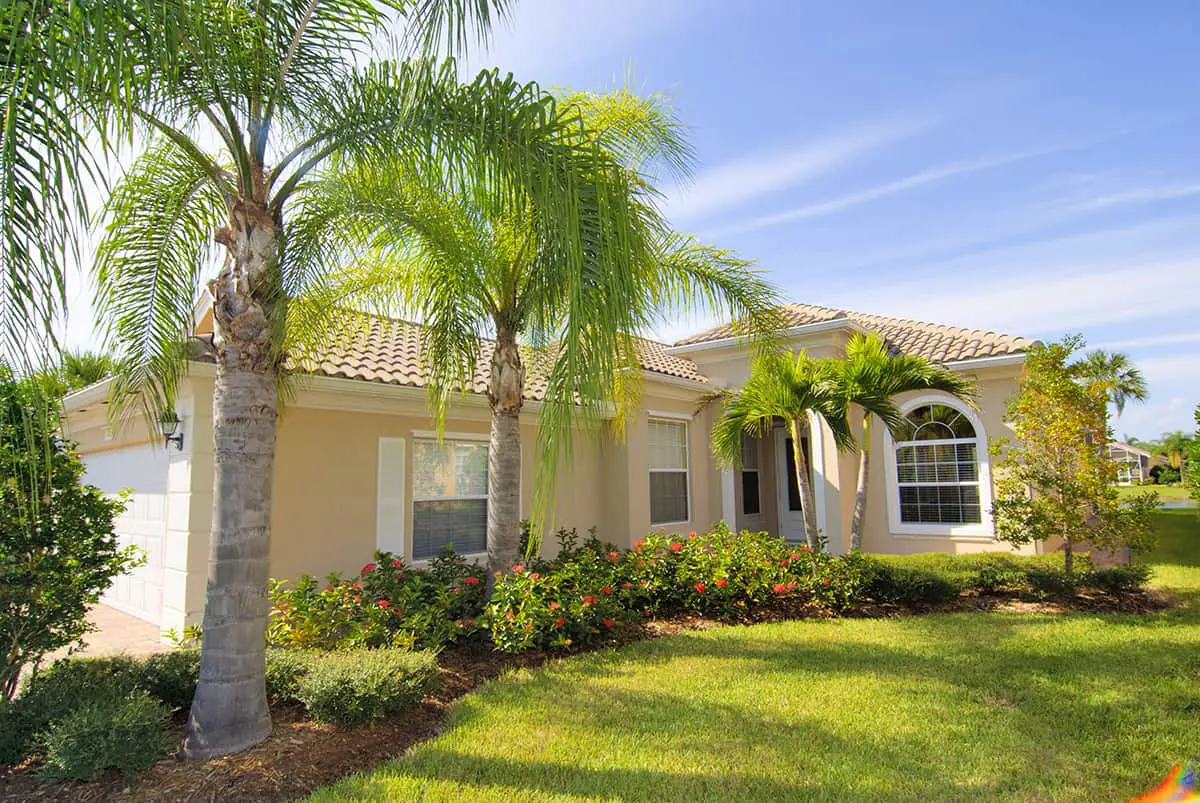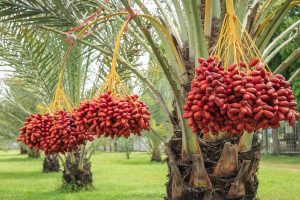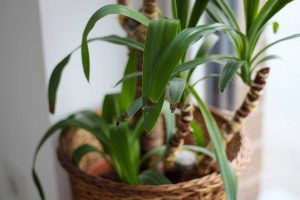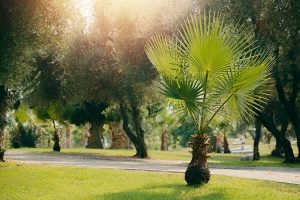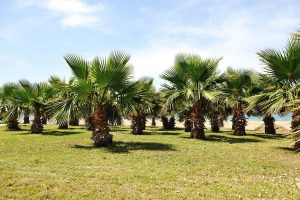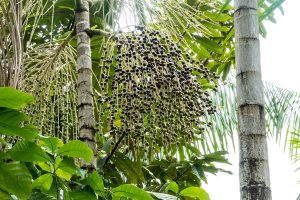The question of whether or not Palm Trees are a type of grass has been debated amongst botany specialists for many years. Here we take a closer look at this question and aim to find out exactly what a Palm Tree can be classified as.
Simply put: no. Palm trees are not a type of grass. However, they are very closely related to grasses, and have many similarities. Palms belong to the Arecaceae family, and grasses belong to the Poaceae family, but both of these families are in the order Arecales, which means they are all monocots. Conversely, trees are a type of dicot, not monocot, which is why Palm Trees are also technically not trees.
Table of Contents
Monocot Vs Dicot
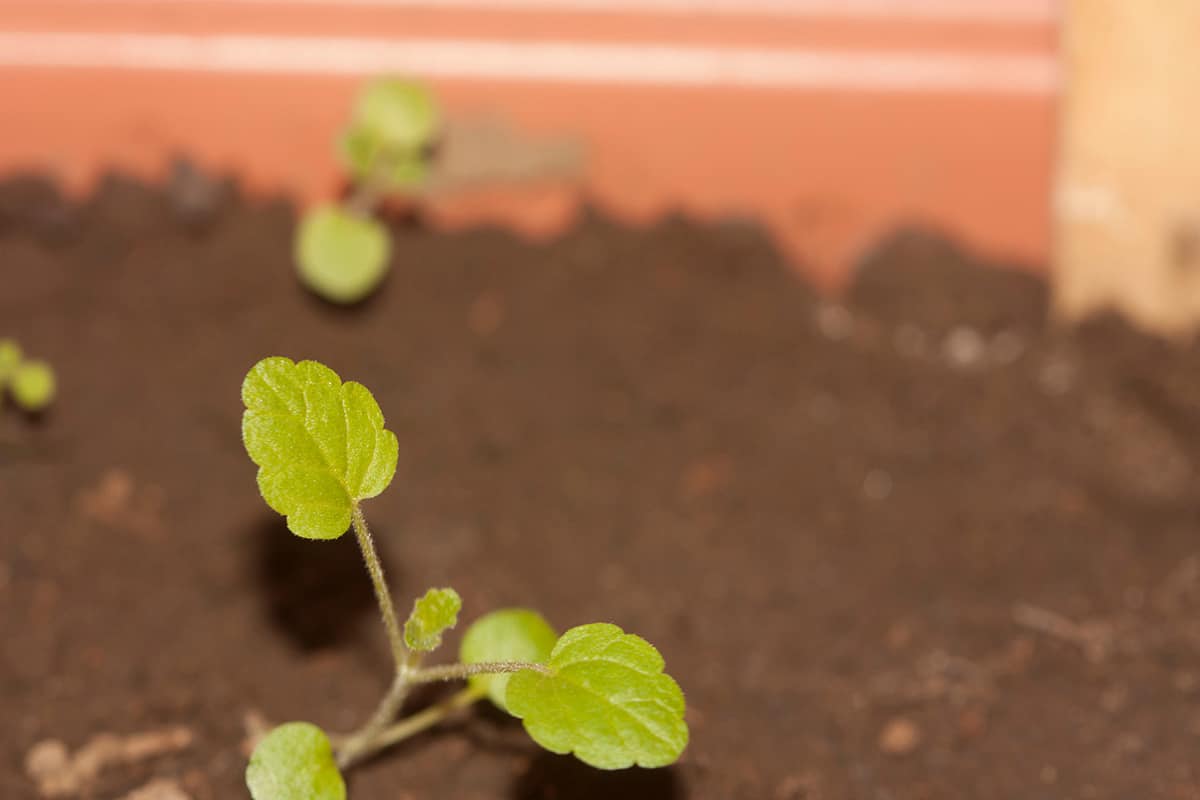
All plants that produce flowers can be categorized as either monocots or dicots. The full name for these is Monocotyledons and Dicotyledons. To understand the difference between these two types of plants, it’s important to get to grips with the terms and their meanings. A cotyledon is the first leaf a plant produces when it is grown from seed.
It is not technically a true leaf, and is sometimes known as a seed leaf. A plant which is a Monocotyledon will produce just one initial leaf, hence the ‘mono’ in the name, referring to the singular leaf. A plant which is a Dicotyledon will produce a pair of leaves as its initial growth, hence the ‘di’ in the name which is a reference to two leaves.
Technically, according to their botanical classifications, palm trees and grasses are monocots. If you have ever grown a lawn from seed, you will probably be able to recall that each seed will send up one single blade of grass. However, if you have grown an herbaceous plant from seed, such as basil, you may have noticed that each seed will send up a tiny pair of first leaves.
There are more differences between monocots and dicots. Monocots have fibrous roots while dicots have taproots, and monocots are herbaceous while dicots are woody. When a monocot flowers, it will produce sets of 3 petals, while dicots produce flowers with sets of 4 or 5 petals.
Monocot foliage will have parallel leaf veins, for example the way that leaves on a palm tree sit exactly opposite each other on the frond. A dicot by comparison, has branching leaf veins which do not make a mirror image of each other.
Is a Palm Tree Really a Tree?
Kew Gardens explains that “palms are evolutionarily, morphologically and physiologically distinct from other trees. In fact, palms are more closely related to grasses than to ‘normal’ trees.” Trees are types of dicots, because they have woody above-ground stems, branches or trunks, and have taproots. Since palm trees are monocots, does this mean they cannot be truly classified as a tree?
There is some disagreement over this. The Lady Bird Johnson Wildflower Center at the University of Texas at Austin explains that botanically a tree is described as “a woody perennial plant having a single main stem or trunk which generally grows more than 20 feet tall.” Since many types of palms do have a single main trunk which grows to over 20 feet, they argue that palm trees can technically be categorized as trees.
However, it is the word ‘woody’ in this description which has been overlooked, since the trunks of palm trees are actually not woody at all. If you were to chop down a palm tree with a chainsaw you would find that it would be very wet and fibrous, much like when you mow the lawn with a lawnmower.
Comparatively, woody trees have relatively dry trunks which can be sawn through without making a wet mess. Palm trees do not have rings at the cross section of their trunks like true trees, and instead they are made up of a dense mass of tube-like fibers.
It is this composition in the trunks of palm trees which allows them to be so flexible, for example bending over in strong winds. Trees which have woody trunks, such as oaks or maples, will instead snap under pressure.
There are also many types of palm tree which have no trunk or main stem at all, such as the Cat Palm (Chamaedorea Cataractarum) and the Mazari Palm (Nannorrhops ritchiana) which appears more like a shrub than a tree.
If Palm Trees Are Not Grass, and Not Trees, What Are They?
Technically, palm trees are a type of herbaceous perennial plant, and the Royal Horticultural Society describes them as ‘woody herbs’ despite the fact that palm trees are not woody at all. Thinking of palm trees as a type of herb may sound odd, since they have so many physical aspects that closely resemble trees more so than herbs or even grasses.
For this reason, Frederick B. Essig, an Associate Professor at the University of South Florida, argues that the word ‘woody’ should be swapped out for ‘fibrous’ to give a more accurate account of what palm trees really are. He explains that “ many tropical and xeric monocots can be referred to as evergreen perennial herbs.
That would cover agaves, aloes, yuccas, and birds-of-paradise, as well as smaller palms. Tree-like monocots, such as coconut palms, bamboo, screw-pines, Joshua trees, and dragon trees, might be called ‘fibrous arborescent perennials.’”
Palm Trees in the Landscape

If you are a garden landscaper you will find it makes much more sense to simply refer to palms as trees because they fulfill the requirements of a tree in the landscape. If somebody requested a woody herb you certainly wouldn’t consider bringing them a Coconut Palm Tree, as this will surely be vastly different to what they had in mind.
For this reason, many people, including those in the profession of botany, continue to consider palm trees as trees purely for the sake of ease, and so as not to cause misunderstanding.
Close Relations to Palm Trees
Other types of plants that are closely related to palm trees include bamboo, grains, lilies, and orchids. All of these plants are also monocots, so they share many of the same physiological elements as palm trees.
What is Palm Tree Wood Used For?
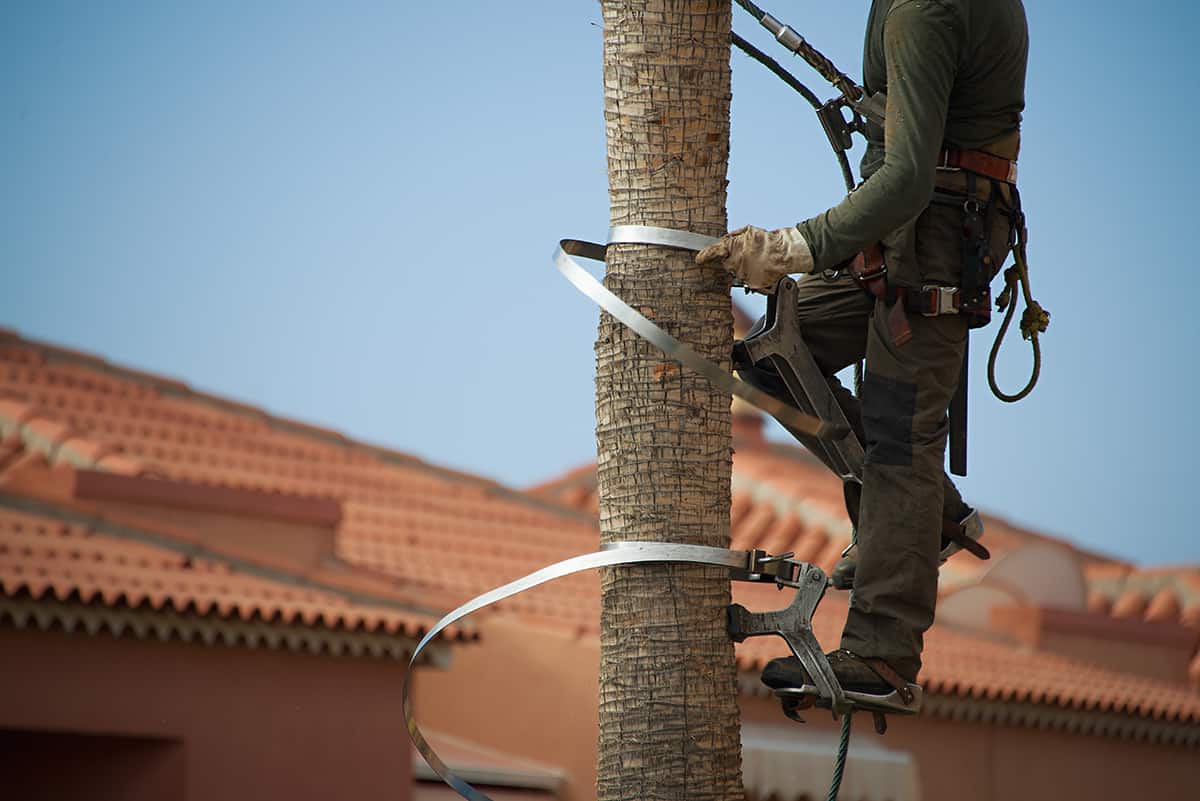
Technically, the material you get from the trunks of palm trees is not a type of wood, and can neither be identified as a softwood or hardwood. This is because it has a fibrous structure which makes it different to the types of trunk you will find on true trees. However, the trunks of palm trees can be useful.
Most commonly, palm tree ‘wood’ is utilized for making lightweight furniture and accessories similar to wicker or bamboo furniture and baskets. It is not a strong structure, and the wet nature of the palm trunk makes it a poor choice for firewood. It takes a long time to dry out, and will smoke rather than flame if it hasn’t been fully dried.
Even when dried, it will burn through very quickly. Cutting down a palm tree for the purpose of creating firewood is also a messy process, and you can expect to go through several chainsaw blades because of the high water content and fibrous composition.
